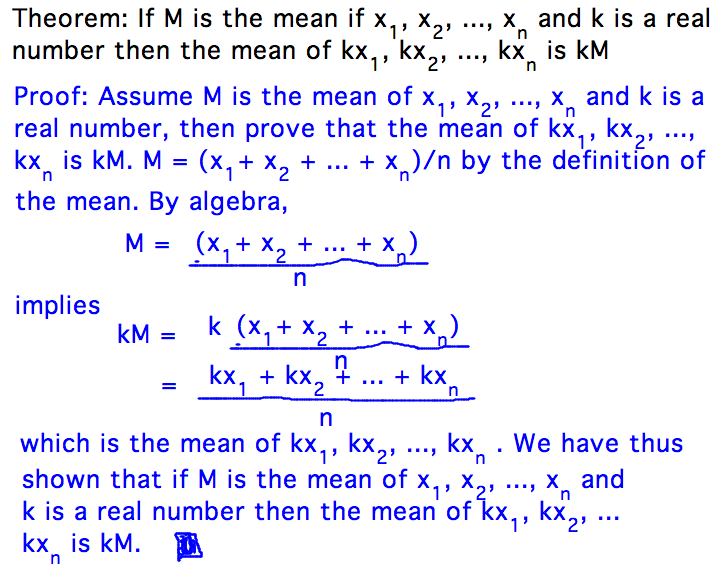- Using Google calendar to make appointments with me
- Can devise a proof working entirely backwards from conclusion if you’re careful about direction of implications
- Section 1.2 (esp. before “Writing Guidelines…” part)
- Example
- Define the mean of real numbers x1, x2, …, xn
to be (x1 + x2 + … + xn) / n aka

- Prove that if M is the mean of x1, x2, …, xn, and k is a real number, then the mean of kx1, kx2, …, kxn is kM
- In devising this (or any) proof, I strongly recommend starting by mapping out the big picture of your argument, e.g., via know-show tables or other brainstorming tools, and only afterwards putting it into formal terms with the right opening and closing sentences, variables in italics, etc.
- Ideas/insights behind proofs
- Key thing is that k factors out of the sum
- Or maybe that k distributes into it
- These statements reflect the same core insight, but factoring is the natural way to think about it if you reason mostly from conclusion to hypothesis (i.e., you mostly ask backward questions in Sundstrom’s terms) while distributing is the natural way to think about it if you mostly reason from the hypothesis towards the conclusion (asking forward questions)
- The formal proof:

- Define the mean of real numbers x1, x2, …, xn
to be (x1 + x2 + … + xn) / n aka
- Writing proofs
- Watch “Writing Guidelines” video at https://www.geneseo.edu/proofspace/Ch1Sec3